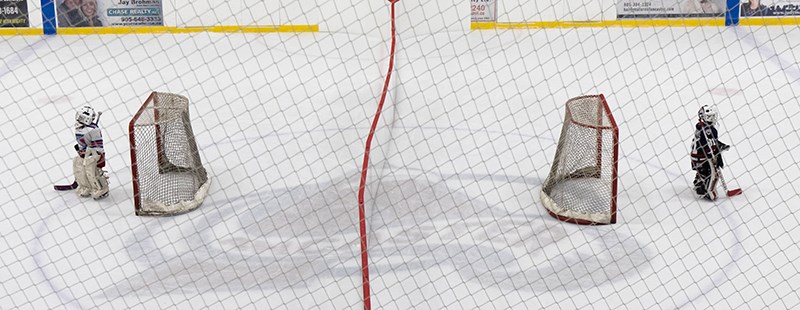Tara Jeffrey
Mike Johnson wasn’t exactly winning over local hockey parents when he pitched some drastic on-ice changes to the game two years ago.
“I’d say about 50% of parents thought it was a huge step backwards,” said the outgoing chairperson of the Sarnia Hockey Association. “Another 30% thought it was a great idea, and the rest said they’d ‘wait and see.’”
He’s talking about new guidelines being implemented across minor hockey that use cross or half-ice playing surfaces, scaled down equipment and lighter pucks for younger players. It’s being hailed by Hockey Canada as a game-changer for successfully introducing the sport to beginners.
Many other centres started rolling out the changes this past year, but Sarnia got a head start in 2016, purchasing custom curved boards and age-appropriate goalie equipment and nets, in an effort to scale down the game to match the age group, Johnson said.
According to Hockey Canada, age-appropriate programs put an emphasis on skating skills, increasing the number of puck battles, passing, shooting, ice awareness, and an overall elevation of hockey sense.
“In my opinion, it’s one of the best things Hockey Canada has done,” said Johnson. “When you engage in a smaller area and can’t skate from end to end, everybody gets involved in the action.
“The goal is to make sure these kids have fun, and enjoy a game which — as we’ve seen in recent weeks — has brought this country together.”
Currently, cross-ice game play has been implemented for the Initiation age group (5 & 6) and will be in effect for Tyke players (age 7) this coming 2018-19 season.
By 2019-2020, game-play for the novice age group (age 8) will be half-ice during the first half of the season, and transition to full-ice during the second half.
Statistics indicate the new format has led to a 10% increase in skating acceleration, five times more passes received and puck battles, twice as many puck touches, pass attempts, and more than double shots on goal.
Johnson said the association invested about $26,000 in the new equipment, including the boards, but noted that cheaper, foam divider pads can be used in smaller centres.
“Right now, we may all be too focused on over-competing and under-teaching,” said Phil McKee, executive director and the Ontario Hockey Federation. “This fresh new direction demonstrates that organizers are thinking about long-term goals that include short-term benefits.”
Johnson echoed those comments, stressing that it’s not all about raising the next NHL star.
“They’re scoring more goals, they’re touching the puck, and most importantly, they’re excited to get here,” he said. “And if this way of playing can make little six-year-old Johnny come back every year, and still play 35 years from now, well, mission accomplished.”
As for the skeptical parents, Johnson said most now embrace the new style of play.
“I came back for our year-end event and had some parents say to me, ‘You know what, I take it back,’” he said. “‘There’s real value in this.’”
